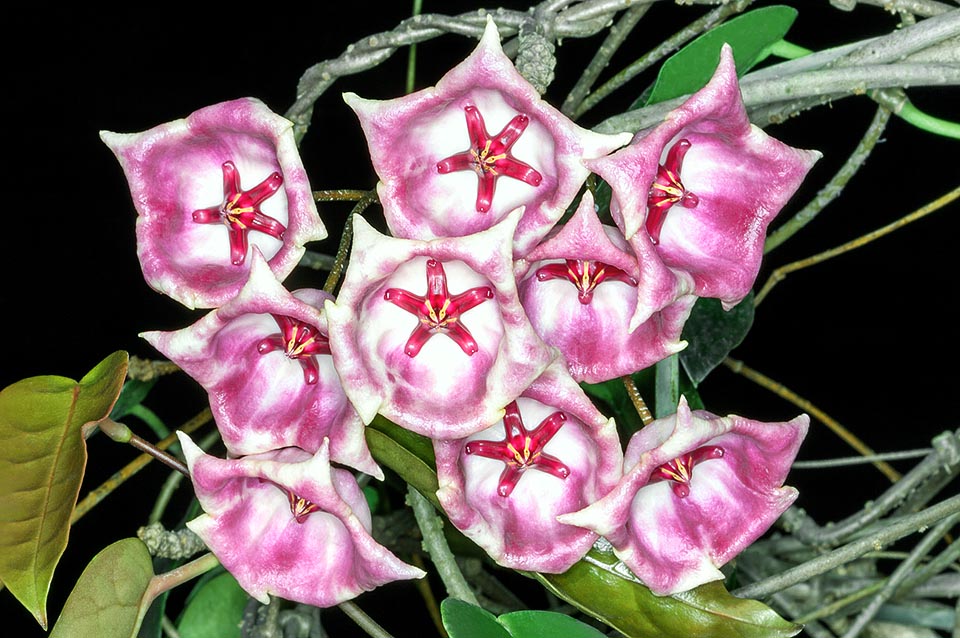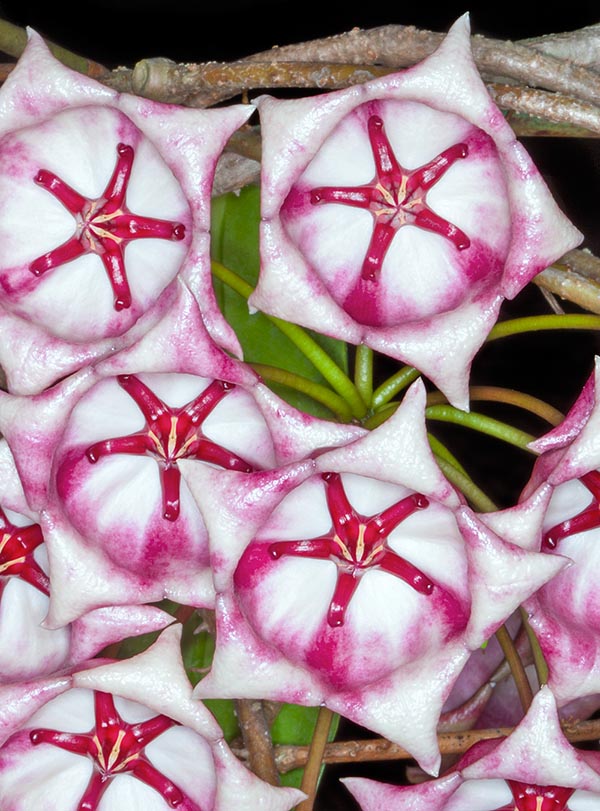Family : Apocynaceae

Text © Pietro Puccio

English translation by Mario Beltramini

Native to the pluvial forests of Papua New Guinea, the Hoya archboldiana is a sturdy evergreen climber with stem that can be some metres long. The more or less succulent leaves are initially reddish brown then glossy dark green. The drooping umbel inflorescences can be even of 20 cm of diameter © Giuseppe Mazza
The genus is dedicated to Thoms Hoy (ca. 1750-1822) botanist and curator of the gardens of the Duke of Northumberland; the species is honoured to the American explorer Richard Archbold (1907-1976).

The flowers, 4-5 cm broad with 5 triangular retroflexed lobes, stand among the biggest of the genus © Giuseppe Mazza
Common names: Papua wax palnt (English).
The Hoya archboldiana C. Norman (1937) is an evergreen climber with stems that may reach some metres of length and more or less succuclent leaves, simple, oblong with pointed apex and entire margin, initially reddish brown, then glossy dark green, up to about 18 cm long and 5-6 cm broad.
Umbel axillar inflorescences, of up to about 20 cm of diameter, carrying 6-18 drooping cup-shaped flowers with 5 triangular retroflexed lobes, of 4-5 cm of diameter, among the biggest of the genus, from pinkish white, with high ambient temperature, to deep pink with medium temperatures, and dark red nectars crown; the flowers emit a slight perfume, that in the evening gets stronger, and last up to 2 weeks.
The new inflorescences do appear only on the new vegetation, but the peduncles are persistent and may bloom again in the follwing seasons, therefore it is important not to cut them after blooming.
The fruits are follicles in couple containiong numerous seeds provided with a tuft of silky hairs that favour the dispersion through the wind.
It reproduces by seed, but usually by cutting, with 2-3 nodes, in very sandy loam or agri-perlite maintained humid at a temperature of 26-28 °C; the first blooming takes place after 2-3 years.
Very vigourous species cultivable in open air in the tropical and humid subtropical climate zones in a very luminous position, but avoiding direct sun, in particular that of the central hours of the day; requires a highkly porous and draining substratum, rich of organic substance, neutral or slightly acidic.
Cultivable in pot on robust supports, with the same precautions and lowest winter temperatures not under the 14 °C; the waterings must be regular and abundant in summer, spaced in winter, to favour the blooming, coming from a monsoonal zone; if the atmosphere is too dry are useful the nebulizations with non calcareous water, rainwater, demineralized or by reverse osmosis, also for avoiding unaesthetic spots on the leaves.
→ To appreciate the biodiversity within the APOCYNACEAE family please click here.
